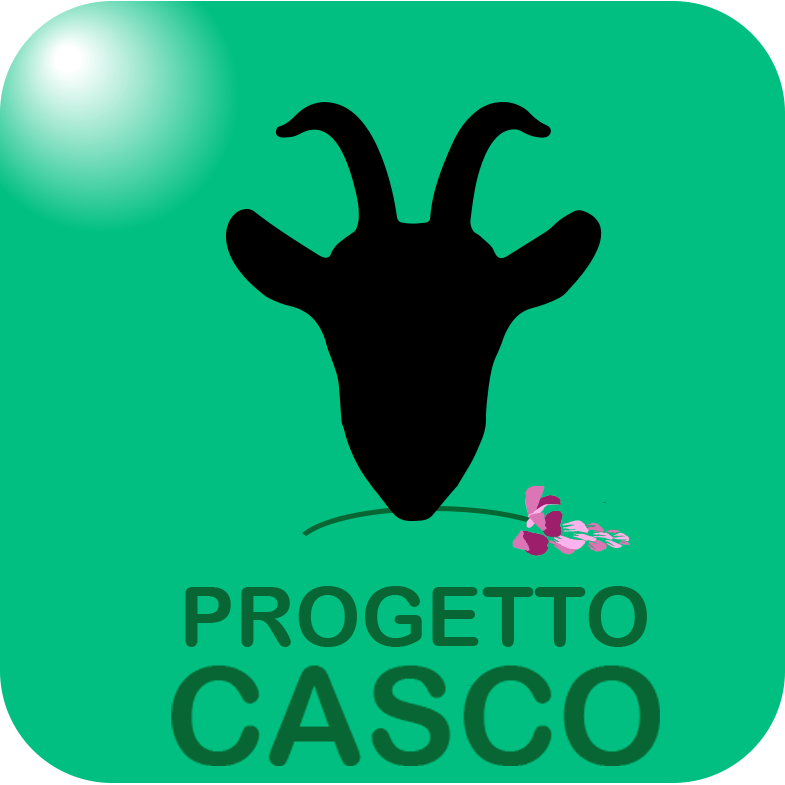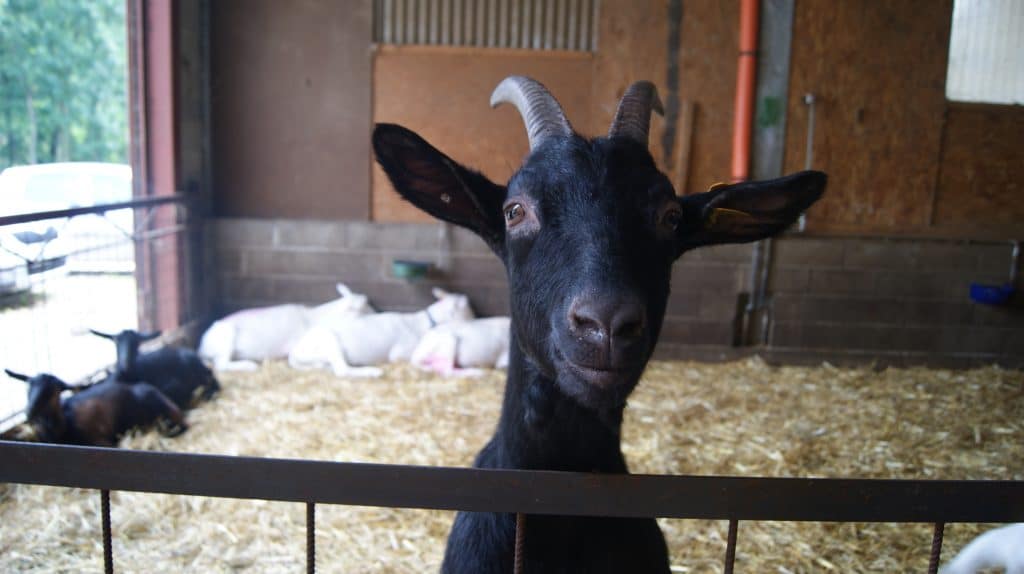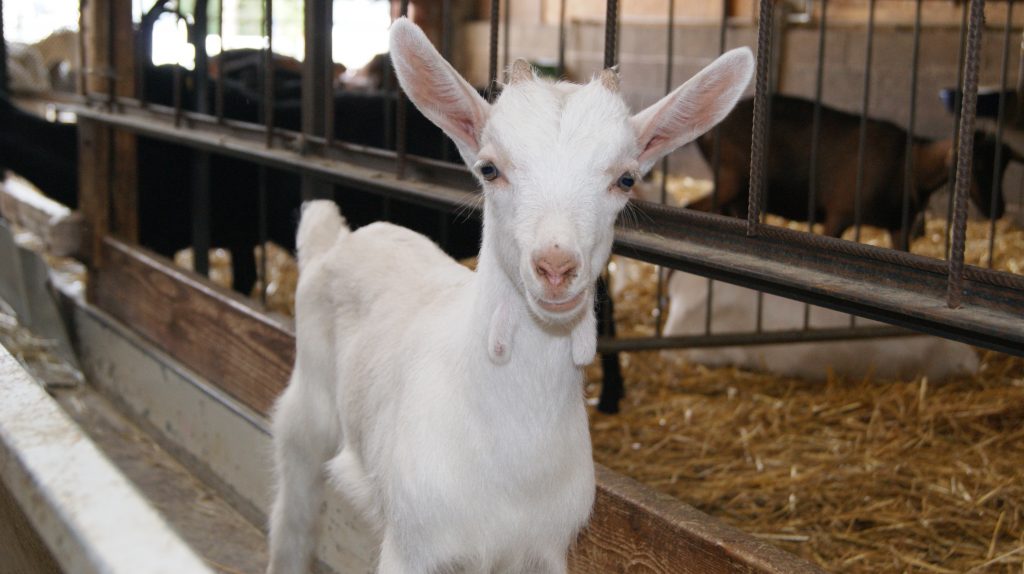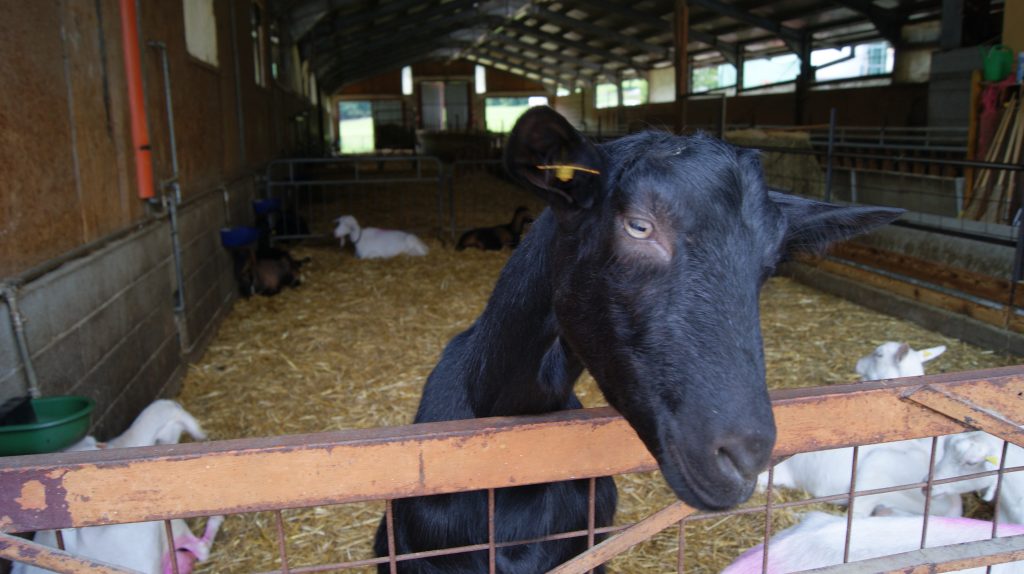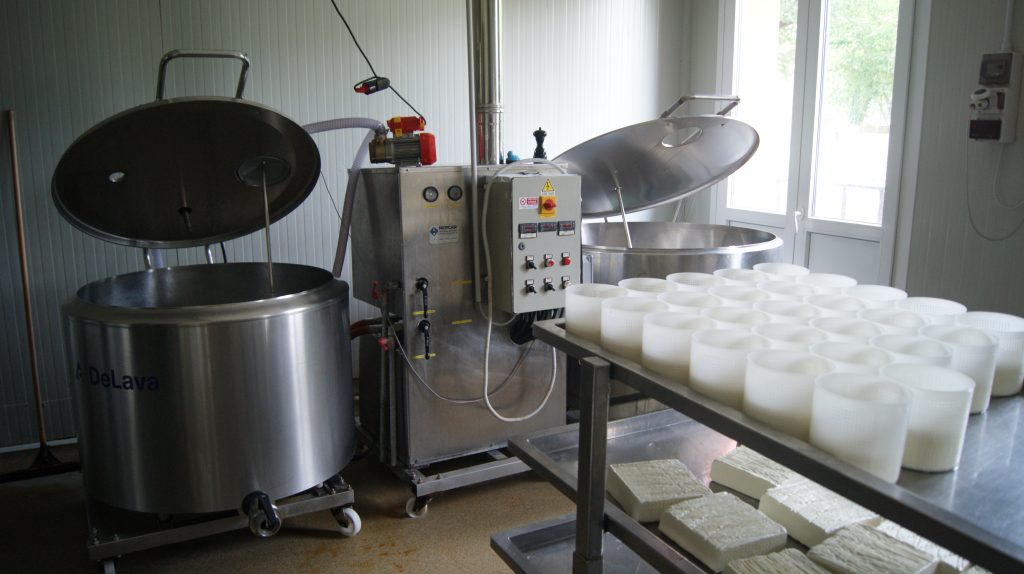Mattia is currently president of the Consorzio di Tutela della Formaggella del Luinese DOP and is part of the breeders’ association of Nera di Verzasca. For several years he was President and Director of the goat section of the APA of Varese.
Location – The farm is located in the bottom valley of Valcuvia at an altitude of 281 m. With a total agricultural area of 62 hectares: 40 are used for grazing and 22 hectares of permanent grass for haymaking. Overall the surfaces have a good acclivity and exposure.
Bred animals – Currently 257 goats in lactation are bred, of which 170 of the Saanen breed,
30 of the breed Camosciata of the Alps and 10 of the native breed Black of Verzasca, recently introduced. The three breeds are kept in purity, with separate reproductive management of the mothers of the replacement. Some alpine grey cattle, some pigs and poultry are also bred.
